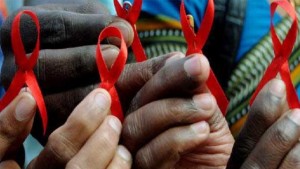 ADDIS ABABA, Ethiopia, Wednesday July 15, 2015 – The United Nations is reporting major progress by the Caribbean in battling HIV/AIDS, with the region recording the biggest drop in new infections compared to all regions in the world.
ADDIS ABABA, Ethiopia, Wednesday July 15, 2015 – The United Nations is reporting major progress by the Caribbean in battling HIV/AIDS, with the region recording the biggest drop in new infections compared to all regions in the world.
According to a report from the Joint UN Programme on HIV/AIDS (UNAIDS), ‘How AIDS changed everything — MDG6: 15 years, 15 lessons of hope from the AIDS response’ which indicates that the world has met and exceeded the sixth millennium development goal of halting and reversing the AIDS epidemic, it is estimated that the number of people newly infected with HIV in the Caribbean in 2014 had been cut in half since 2000.
“The number of people living with HIV in the Caribbean fell sharply in the first half of the past decade, as new infections declined and substantial AIDS-related mortality persisted. As access to HIV treatment has expanded, the number of people living with HIV has stabilized and begun to increase, consistent with trends seen globally,” stated the report which was released yesterday on the sidelines of the Third International Conference on Financing for Development.
The decrease in new infections was most pronounced in the 2000 to 2004 period, when they fell by almost 32 per cent. In the 2005 to 2009 and 2010 to 2014 periods, more modest declines in new infections of about 10 per cent occurred.
Haiti accounted for roughly half of all new HIV infections in 2014 in the Caribbean, with the Dominican Republic contributing the second largest number of new infections.
AIDS-related deaths in the region have also fallen by 59 per cent since 2005.
“The Caribbean is the only region in which the estimated decline in tuberculosis-related deaths among people living with HIV has exceeded 50 per cent. From 2004 to 2013, TB-related deaths among people living with HIV in the Caribbean fell by 66 per cent,” the report stated.
Worldwide, new HIV infections have fallen by 35 per cent and AIDS-related deaths by 41 per cent, and UNAIDS said the world is on track to ends the AIDS epidemic by 2030.
Meantime, the UN body also reported that evidence indicates the Caribbean has achieved important successes in delivering essential HIV prevention services to sex workers.
Reported condom use among sex workers in the region during their last episode of commercial sex ranged from 72 to 98 per cent. In recent years, HIV prevalence among sex workers in the Caribbean ranged from one per cent in Antigua and Barbuda to eight per cent in Haiti. By contrast, the prevalence of HIV in men who have sex with men in the region ranges from two per cent in Antigua and Barbuda to 38 per cent in Jamaica.
The other progress was reported in access to antiretroviral therapy. In 2014, 44 per cent of all people living with HIV in the Caribbean received antiretroviral therapy, similar to the global coverage. This represented a sharp increase in treatment access since the launch of the Millennium Development Goals in 2000 when treatment access was essentially non-existent in the region.
However, the not so positive report on the HIV/AIDS situation in the Caribbean was that stigmatization and discriminatory attitudes towards people living with HIV remain common in many countries.
In Haiti and the Dominican Republic, the two countries that account for the majority of new HIV infections in the region, 40 per cent or more of people surveyed said they would avoid buying fresh vegetables from a person known to be living with HIV; and a survey among female sex workers living with HIV in Santo Domingo found that female sex workers living with HIV were lost at each step of the HIV care continuum.
“Stigma and discrimination related to sex work and HIV were important factors affecting treatment continuation and engagement in care. Treatment interruption was found to be over three times more likely among sex workers who experienced sex work-related discrimination,” the report stated.
It is estimated that there were about 280,000 people living with HIV in the Caribbean in 2014, including equal numbers of women and men and 13,000 children. An estimated 29,000 were young people aged 15 to 24 years, with females representing about 53 per cent.
Although the number of people living with HIV in the Caribbean is smaller than in other regions, it still has the second highest HIV prevalence of all regions.

